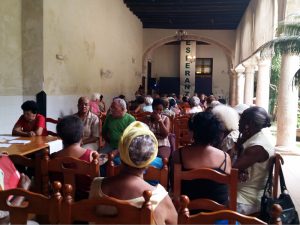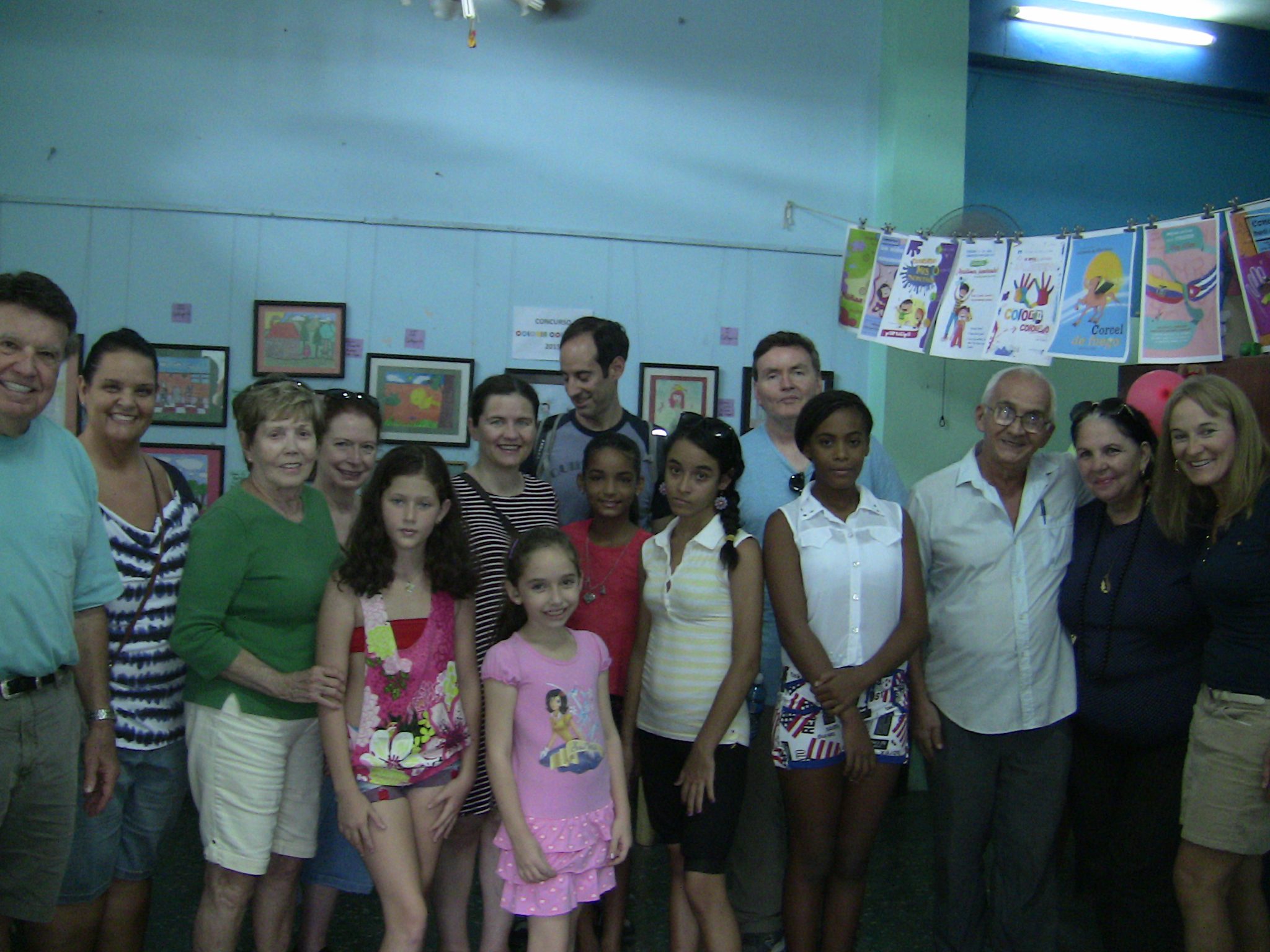It was the first full day of the trip. I awoke early, ate breakfast and met my tour guide Rose and travel companions in the hotel lobby. It would be a full day touring by foot and bus.
We were eight adventurers–George and Barbara, a couple who ran a family furniture business in Florida, Mike and Ana, a couple living in the Pacific Northwest who were just months away from expecting their first baby, Joel, a man in his 30s or 40s from California, two women from Alaska, and me.
Clouds over head kept the air cool as we walked around Havana. Back at the Plaza de Armas, the story of Cuba unfolded.
Christopher Columbus had landed there in 1492, declaring the island to be “the most beautiful land human have ever seen.” Twenty years later, the Spanish took it as their own, using mostly uneducated former convicts to savagely enslave the natives to work gold mines. Within 20 years, the local population disappeared.
“They left,” said Rose.
“Where did they go?” I asked.
“They died,” she said.
Defeated and enslaved, the native population fell to illness, exhaustion and suicide, leaving no sign or imprint of their way of life. Some of their bloodline may have survived, as Spaniards took the native women as wives. But their peaceful, half-naked and polygamous culture disappeared.
By 1513, the Spanish began importing Africans as slaves. In the three and a half centuries where slavery was legal under the Spanish monarch, more than a million African slaves would be brought to Cuba.
Meanwhile, Havana flourished. It became a key stop on the trade route to the New World. Using the sweat of the slaves, Spaniards in Cuba traded in gold and cultivated sugarcane and tobacco.
Today, you can see signs of both legacies in the people and architecture: A majority of Cubans derive at least part of their heritage from enslaved ancestors, while the majority of the historic landmarks originate from Spanish rule. Today, both legacies are celebrated.
Modern Day Cuba
For many Cubans, history did not begin until 1959—the year of the Revolution.
You cannot understand modern Cuba until you see from where it came. Before the revolution, Cubans lived under the military dictatorship rule of Fulgencio Batista. He ruled with an iron fist, limiting speech and human rights. Batista appointed U.S.-based mobsters to key government posts, and made himself a rich man by feeding off the corrupt system he created.
You won’t find statues or murals of Batista in Havana, but he left immoveable marks on the city. One of those marks is located on Calle de Obispo. It’s a rectangular building with glass exterior.
“Batista tore down one of the most beautiful buildings in Havana to build this one,” Rose said. “He built it so he could put a heliport on the roof.”
The symbolism is striking. One can imagine Batista flying over the heads of common Cubans in a helicopter, perhaps never encountering the ordinariness of pedestrian life nor appreciating its beauty.
Ordinary life is valued in modern-day Cuba, at least on tours certified as people-to-people by the U.S. State Department.
We traveled by bus to Central Havana to visit social services projects. One was a senior day care center.
It was in an old building with a courtyard and wide open spaces. Retirees sat around big tables discussing plans for the center. Whatever the specifics of their meetings, the seniors seemed to take the conversation seriously.
The idea behind the center was that if older people had a place to go during the day, they would not need to be sent away to retirement homes. They could live with their families.
“We care about our parents,” Rose said.
“We have senior centers too,” I said, trying to assure her Americans care about their parents too.

Next, we went to a small center where children go after school and on weekends to work on crafts, sing songs and meet with American tourists. The girls wanted to know one thing.
“What do you think of Cuba?” they asked.
We all nodded, saying we liked it. The girls studied our faces. They wanted to know more. What specifically did we like?
“Have you been to the Malecón?” they asked.
The Malecón is the five-mile sea wall extending from the old harbor through Central Havana and to the Vedado neighborhood.
“Yes,” said Mike and Ana, assuring the girls they enjoyed it.
The visit with the children ended with a dance and a photo. It put everyone in a good mood.
At that age, friendship is simple.


